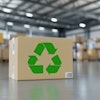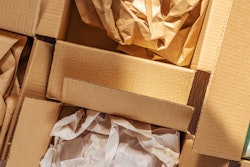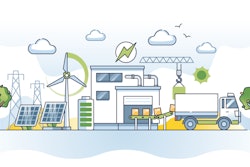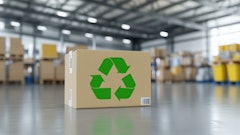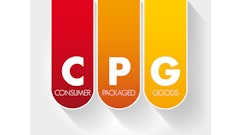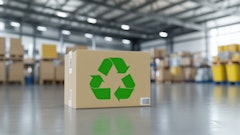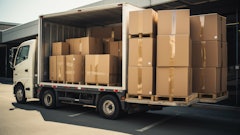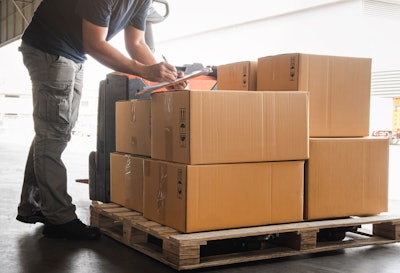
There’s an important quote from Stephen Covey, the legendary business leader who is best known for writing The 7 Habits of Highly Effective People. It reads like a guiding principle for attacking problems and increasing your overall effectiveness, especially in intralogistics.
He wrote: “To begin with the end in mind means to start with a clear understanding of your destination. It means to know where you’re going so that you better understand where you are now, and so that the steps you take are always in the right direction.”
That’s a principle that any business leader can adopt when considering new directions. But for companies looking to improve their warehousing processes, “beginning with the end” is something I believe is even more essential. By thinking of innovative technology and automation equipment systems in a new way, we can significantly help our supply chains move forward by, in a sense, working backwards.
As automation tools have begun to be integrated, warehouses have tended to look at their processes in a linear, forward-flow fashion. Companies have focused most of their attention on the front end and middle of the warehouse process (like offloading methods or other reception and storage processes) or, even more prevalently, the middle of the warehouse where product is picked from storage to ultimately be shipped to consumers. This focus has yielded tremendous benefits and driven strong adoption in a range of goods-to-person technologies, ranging from traditional shuttle storage systems to cASRS systems.
For most companies, there remains a bottleneck in the process. Efficiencies created by automated picking processes, while making the middle of the process run more effectively, can lose much of its impact if the packing process, the backend of the operation, isn’t properly optimized in an equally thoughtful way. Because manual packers will still process one order at a time, when the number of picked orders assigned to each packer increases the gains in picking efficiency will not necessarily translate into increased end-of-line throughput.
And here’s where real opportunity exists. End-of-line packaging automation, rather than an afterthought, should actually be where many logistics companies should begin their automation process. The back end can provide enormous benefits not only to the efficiency of the packing process itself but to the overall warehouse cycle time as a whole. While return on investment from ASRS systems will usually occur in three to five years, the cascading benefits of end-of line automation can condense time to ROI to within one to three years. Let’s explore how that is possible.
The "Pick to Shipper" Process
Once an item is picked in a warehouse, the traditional packing process is extraordinarily manual. Typically, items are collected in a series of reusable plastic totes, which are then transferred to a packing station. Once there, a packer typically then engages in a series of manual steps: removing the items from the tote, choosing a shipping carton (often among dozens of choices), placing the item within that carton, sealing the package, applying a shipping label and transferring the finished package to a sorting station. All of these steps take time, involve manual decision making and produce a risk of human error that can negatively affect the final product and the end customer experience.
With automation, many of those manual processes are eliminated. After items are picked, they are placed directly into the proper shipping carton or vessel, usually from a small custom list of options. The box is then automatically height reduced and sealed, an automated label is applied, and is transferred to ship. All of these manual processes are stripped away, reducing the chances of significant errors and allowing labor to shift to other areas of need. The result is significant increases in efficiency and a sharp decrease in material waste. Other benefits include a tamper-proof, sealed box and a controlled and repeatable process that maximizes box presentation and customer satisfaction.
The Ends Justify the Means
It’s not just the technology itself that improves the back-end process. By analyzing any warehouse’s master customer and packaging data, companies can significantly influence their upstream processes as well. For example, cartonization software can analyze product purchasing histories, understand dimension sizes needed for most orders, and determine the optimal configuration of virtually any package. This allows companies to potentially reduce the boxes needed for shipping from 15-50 options down to basic small, medium and large footprints. These optimizations make it possible to reduce dimensional weights in shipping up to 30% of original parcel volumes.
In this case, and many others, the back-end shipping data can help inform the entire warehouse process flow, creating the possibility for new space and time-efficient solutions throughout the system. While the setup can take time and effort, the benefits are easily justified over the long haul with clear ROI from both a cost and efficiency perspective.
Building Automation Back to Front
Customers demand that their items are shipped quickly and with limited footprints, and companies are truly investing their time and funds to ensure they deliver on that promise. And with “pick to shipper” technology, that promise can become a reality. But to get there, companies need to adopt a “back-to-front” mindset, and, like Stephen Covey suggests, begin with the end in mind as you consider your next move in intralogistics automation.

